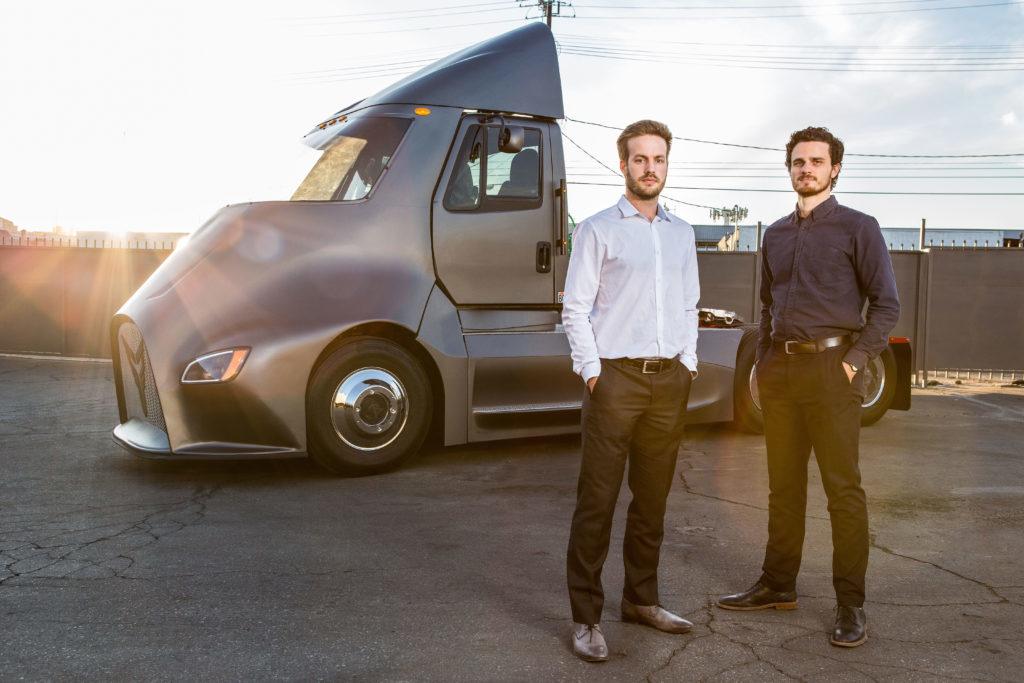Updated: Jan. 19, 2018 at 4:05 p.m.
When most people hear the name Thor, they imagine the superhero who saved New York from aliens.
But two former students wanted to change the association with their new company, Thor Trucks – an energy efficient big-rig that is helping to save the world in a different way.
Dakota Semler and Giordano Sordoni started their 18-person company in 2016 to build a semi-trailer electric truck called the ET-One. The truck has a range of 300 miles, a carrying capacity of 80,000 pounds and – unlike other gas-guzzling long haul trucks – a zero emission electric engine.
Sordoni, who graduated in 2013 with a bachelor’s degree in international business, said that he wasn’t motivated to start Thor Trucks because electric vehicles were popular at the moment, but because he and Semler saw a job that could be done better with an electric engine.
“We had experience running fleets and saw that there was a need for vehicles that were not as heavily regulated and polluting,” Semler said. “We just needed to find a way to make economic sense out of these vehicles.”
Fleet managers who oversee deliveries on semi-trailer trucks are now able to try out the truck in demonstrations, and the ET-One is expected to be on the market next year.
Semler, who studied marketing but never completed his degree, and Sordoni met in 2012. The two met through Career Treks, an annual program through the School of Business that allows undergraduates to connect with both alumni and prospective employers. In 2016, they met up again and decided to create Thor Trucks together.
Other companies like Tesla are also developing their own electric trucks. But while Tesla is developing and selling different types of electric vehicles like small cars, Thor Trucks is focused solely on developing large trucks to cut down on fuel emissions from deliveries. Tesla unveiled a plan for a similar truck to the ET-One in November, and it is also expected to be released in 2019.
Semler, Thor Trucks’ co-founder and CEO, has a history with the trucking industry. His family owned a fleet of 150 tractor-trailer trucks that operated out of Riverside, Calif. Semler said that experience seeing the industry helped develop the idea for Thor Trucks.
A major issue with creating an economically sensible electric vehicle is determining how and when the vehicle will be recharged, Sordoni, chief operating officer and co-founder, said. Without a national infrastructure for charging stations on par with the number of gas stations, all electric vehicles face limited ranges.
Intimately aware of the challenges of the trucking industry, Thor Trucks designed a vehicle that could be effective now – with or without charging stations dotting the landscape.
The ET-One is designed to be most effective with short-haul jobs – where trucks head out and make mostly local or in-state deliveries and return to the lot at the end of the day. That way, Thor Trucks only has to set up one charging station, in the lot where the trucks will be kept, as opposed to having to create hundreds of them to support trucks driving cross-country.
The truck, which was designed in Thor Trucks’ Los Angeles warehouse, has an engine with the highest energy density possible, to give it the most amount of time out on the road. This design also limits the truck’s maximum speed to 70 miles per hour, but large trucks rarely go over that.
The ET-One is estimated to retail at $250,000, though a cheaper model of the semi with a range of 100 miles for $150,000 is also in development. Most trucks the class and size of the ET-One cost around $120,000.
Sordoni, who suffers from asthma and grew up in the smog-affected city of Los Angeles, instantly saw all the positive impacts that a company like Thor Trucks could bring. He said he saw Thor Trucks as an opportunity to start a business that makes a positive social and environmental impact.
“Passion is important,” Sordoni said. “Solve a problem much bigger than yourself.”
This post was updated to reflect the following correction:
The Hatchet incorrectly reported that Sordoni graduated with a bachelor’s degree in international affairs. He graduated with a bachelor’s degree in international business. We regret this error.




